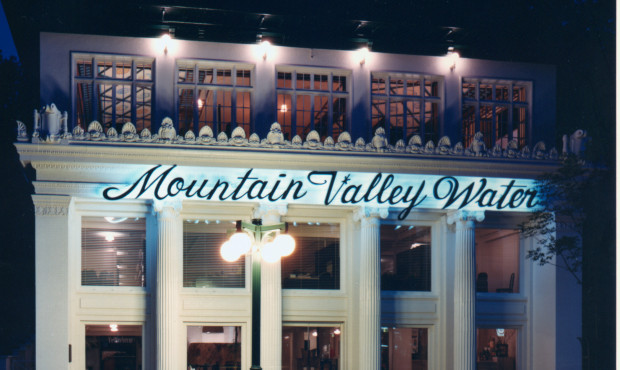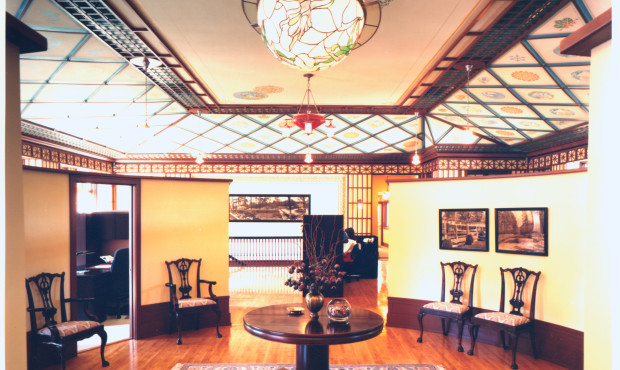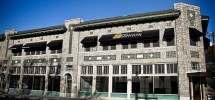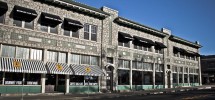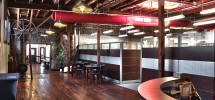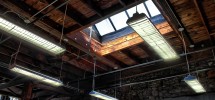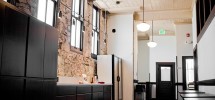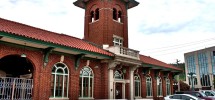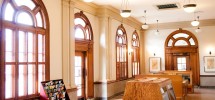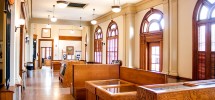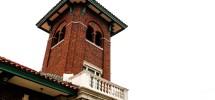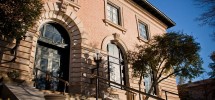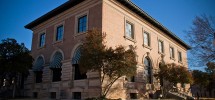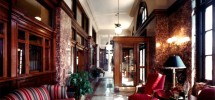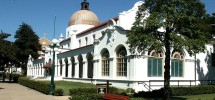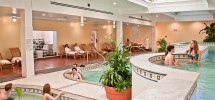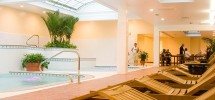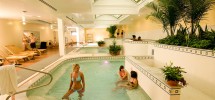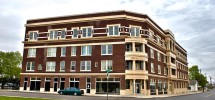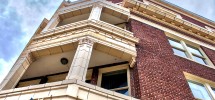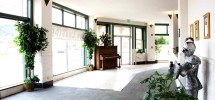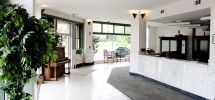“At the turn of the century, Hot Springs, Ark., was a world-class resort. People from all over the country flocked there to take the natural hot springs mineral baths and to drink the water, which was said to cure various ills such as rheumatoid arthritis and bursitis.”After years of neglect and sporadic cosmetic surgery, buildings in this quaint town are now starting to receive the restorative attention they deserve. The catalyst of this development is a 1910 white brick classic revival building of superb street-front proportions. This seems appropriate in a town that has made its living primarily through its water for the building is regarded by the renovation architects, Bob Kempkes and Anthony Taylor, both of Hot Springs, as a temple to mineral water, situated as it is over a still-operating spring. The architects say they persuaded Mountain Valley Spring to restore the building something the company was not sure it was willing to do. The building had harbored the company since its founding merger with DeSoto Mineral Springs in the late 1920s, and the architects suggested restoring it as an affirmation of the company’s history.
In restoring the front, it was decided early on that, because of a tight budget and out of respect for the building’s original exterior, much would be left as it was wherever possible, leaving the architects to concentrate on cleaning and redoing only as necessary. The architects, finding the facade of glazed brick in such disrepair that it had to be replaced, repainted the front in three subtle shades of white. A rooftop dance pavilion was enclosed as a third floor in 1921 to become’s luxury dance hall with an Oriental motif. More recently, the third floor was closed off, boarded up, and used as a mechanical equipment room. Now it contains executive offices. Original pagoda lanterns and chandeliers and a stained glass globe more than three feet across were carefully refurbished. The globe, suspended over the center of the floor, contains several hundred pieces of glass depicting dancing nymphs with hand-painted faces. Original ceiling stencils in seasonal Oriental images were restored, as were the maple flooring and wooden lattice-work in period decorative style. The architects organized the offices so that everyone on the floor can see the globe. The architects extended the third floor in a rear addition that looks as if it might always have been there; they kept the original walls and created more space from a former parking level above one part of the building. Directly underneath the addition is a crawl space housing the heating and cooling equipment and ductwork. With this addition, the architects were able to concentrate more craft on the new part of the building, designing light fixtures, tables, and cabinetry.”
Written by Amy Gray Light
ARCHITECTURE/NOVEMBER 1988

